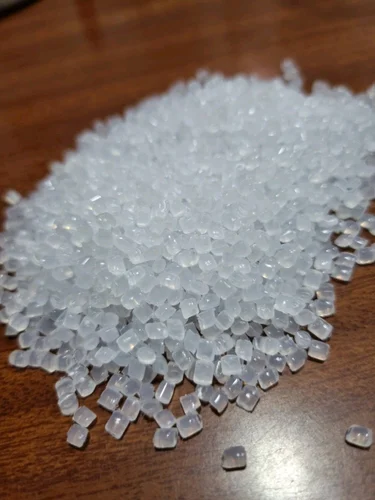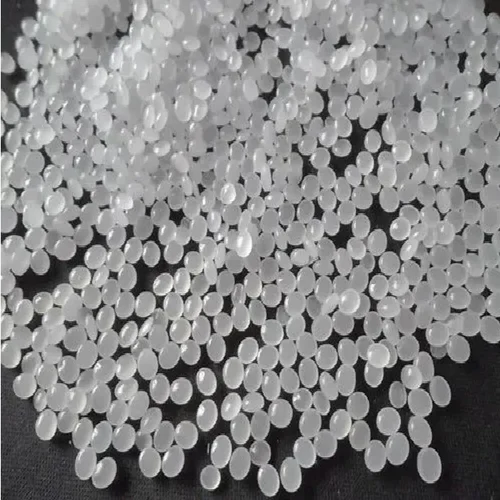LDPE granule for blow molding
LDPE granule for blow molding are a specific type of Low-Density Polyethylene designed to meet the requirements of blow molding applications. LDPE’s properties make it suitable for producing lightweight, flexible, and durable products, especially for squeeze bottles, cosmetic containers, toys, and household items. LDPE’s natural flexibility, impact resistance, and ease of processing are key advantages for blow molding.
Key Characteristics of LDPE granule for blow molding
- Melt Flow Index (MFI):
- For blow molding applications, LDPE granules generally have an MFI between 0.3 to 2.0 g/10 min. This range ensures a balanced melt strength, allowing for even wall distribution in molded products.
- Density:
- Density typically ranges from 0.910 to 0.930 g/cm³, which provides flexibility and resilience. This density range is ideal for applications requiring squeezability and elasticity.
- Mechanical Properties:
- Impact Resistance: LDPE has good impact resistance, making it suitable for products that may be subject to rough handling.
- Flexibility: The natural flexibility of LDPE allows for creating soft yet resilient products like squeeze bottles and other flexible containers.
- Applications in Blow Molding:
- Bottles: Used for household cleaners, cosmetics, and personal care products.
- Toys and Sports Equipment: Durable and flexible, LDPE is also used for items that need to be both lightweight and strong.
- Household Items: Common in small containers and flexible storage solutions.
- Additives (Optional):
- UV Stabilizers: For products exposed to sunlight.
- Colorants: For aesthetic purposes, tailored to specific branding or visibility requirements.
LDPE granules tailored for blow molding offer the benefit of creating lightweight, flexible, and resilient products that are widely used across industries.

Typs of grade
HP2022NDF:LDPE HP2022NDF is a grade typically used in foam applications. It is without slip and anti-block additives. This grades is ideally suitable for foaming processes using both physical and chemical blowing agents.
HP2023JN:HP2023JN is a Low Density Polyethylene grade suitable for general-purpose packaging. It exhibits better draw down, good optical and mechanical properties. HP2023JN contains slip and antiblock additives.
HP2024JDF:LDPE HP2024JDF is a grade typically used in foam applications. It is with slip and anti-block additives. This grades is ideally suitable for crosslink- and non-crosslink foaming processes using both physical and chemical blowing agents.
HP2025JN:LDPE HP2025JN Low Density Polyethylene Resin is a high clarity resin designed for clarity over wraps applications. When properly fabricated, LDPE HP2025JN displays: excellent processability and drawdown; very good toughness and draw down; superior optical properties; and excellent tensile and tear strength.
HP2027LN:HP2027LN is a Low Density Polyethylene grade with increase density. It typically exhibits better draw down ability with high output. Films typically have excellent optics and high rigidity. It contains slip and antiblock additives.
HP4023WN:HP4023WN is an antioxidant free low density polyethylene grade suitable for producing general-purpose films. It contains slip and antiblock additives. It gives excellent processability and optical properties with good mechanical properties.
HP4024WN:HP4024WN is a Low Density Polyethylene grade suitable for producing general-purpose films and it gives excellent processability and optical properties with good mechanical properties. HP4024WN contains slip and antiblock additives.
HP4025ZN:LDPE HP4025ZNLow Density Polyethylene Resin can be readily extruded using conventional blown film techniques utilizing melt temperatures between 150°C and 170°C. LDPE HP4025ZN, when properly fabricated, shows good mechanical properties and high optical properties. It shows very good drawdown properties and excellent processability. This product contains slip and antiblock additives.
HP4027NN:HP4027NN is a Low Density Polyethylene grade with increase density. It typically exhibits better draw down ability with high output. Films typically have excellent optics and high rigidity. HP4027NN contains no slip, no antiblock and no antioxidant additives.
COMPOUND LDPE granule for blow molding
FAQ
What is LDPE, and why is it suitable for blow molding?
LDPE (Low-Density Polyethylene) is a thermoplastic polymer known for its flexibility, impact resistance, and ease of processing. It has a low density, which makes it lightweight and suitable for products requiring flexibility. In blow molding, LDPE’s properties allow for the creation of squeezable containers and durable products with consistent wall thickness.
What is the ideal Melt Flow Index (MFI) for LDPE used in blow molding?
LDPE granules for blow molding typically have an MFI between 0.3 and 2.0 g/10 min. Lower MFI values (around 0.3 to 1.0 g/10 min) are better suited for creating thicker products, while higher MFI values can be used for thinner-walled containers.
What are common applications of LDPE in blow molding?
LDPE is commonly used in blow molding to produce squeeze bottles, cosmetic containers, small household items, toys, and flexible storage solutions. It’s particularly valued in applications where flexibility, impact resistance, and lightweight properties are needed.
Can recycled LDPE be used in blow molding applications?
Yes, recycled LDPE can be used in blow molding, but it may slightly alter the properties depending on the purity and quality of the recycled material. Recycled LDPE is often blended with virgin LDPE to maintain quality, durability, and consistent processing characteristics.
What is the difference between LDPE and HDPE for blow molding?
LDPE is more flexible, softer, and has a lower density than HDPE, making it suitable for squeezable, flexible containers. HDPE, on the other hand, has higher rigidity and is used in applications requiring more structural strength, such as milk jugs and detergent bottles. LDPE is preferred for products that benefit from flexibility and resilience.
What are the environmental considerations for using LDPE in blow molding?
LDPE is recyclable, and using recycled LDPE in products helps reduce environmental impact. Additionally, biodegradable and compostable options for certain applications are being developed, although traditional LDPE remains widely used due to its durability and efficiency in manufacturing.
